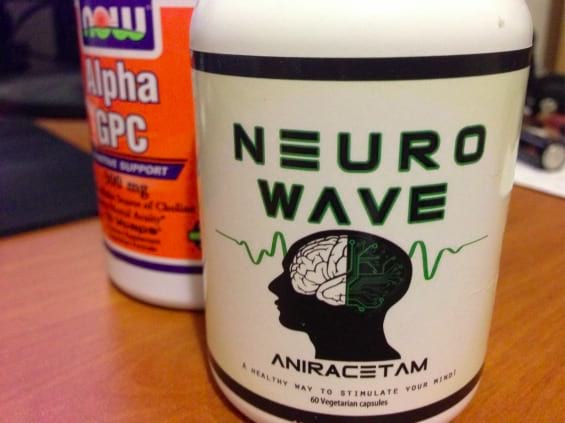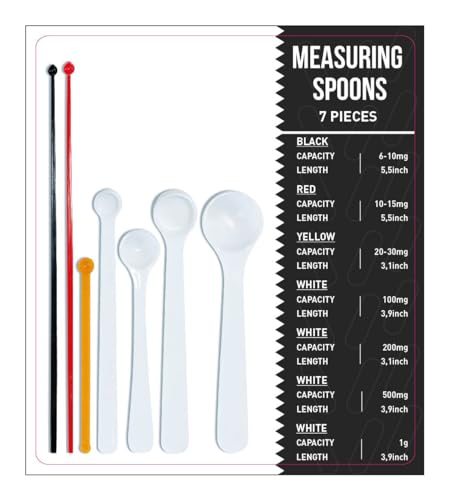
These are the best nootropics I took from 2024 to 2020.
Fitness Disclaimer
The site cannot and does not contain health or fitness advice. The health and fitness information is provided for general informational and educational purposes only and is not a substitute for professional advice. Accordingly, before taking any actions based on such information, we encourage you to consult with the appropriate professionals. We do not provide any kind of fitness advice. THE USE OR RELIANCE OF ANY INFORMATION CONTAINED ON THIS SITE IS SOLELY AT YOUR OWN RISK.
- Executive Summary
- Introduction
- Background and Motivation
- Regulatory Reality Check
- Stack Performance and Protocol
- Nootropics Evaluations
- Risk Acknowledgment—What Could Go Wrong
- Sourcing Considerations
- What I Do Differently Today
- Performance Impact on Work and Lifestyle
- Individual Variability—Your Mileage Will Vary
- Stack Rotation Recap
- The Bottom Line
Executive Summary
Six years of real-world nootropic experimentation proved these compounds work—when you stack smart. From post-withdrawal recovery to peak performance, sulbutiamine and noopept delivered consistent results. The key? Rotation prevents tolerance. Skip weekends, cycle every few weeks, and don’t ignore your body’s feedback. Moderate use beats heroic dosing every time.
Introduction
This case study explores the real-world effects of nootropic stacking over six years, based on my experimentation.
From post-withdrawal recovery to peak cognitive performance, I tested combinations of sulbutiamine, noopept, aniracetam, and more.
Here I break down what worked, what didn’t, and how to rotate smartly without burning out your body or your brain.
Background and Motivation
In 2014, a year after a five-month episode of benzodiazepine abuse, I was at a low point in health, energy, mood, and motivation and used nootropics to help with those side effects of my withdrawal.
Moreover, a few years before the benzos mishap, I had to contend with a protracted chronic fatigue issue that lasted around five months.
I felt this affliction threatening to return in 2014, and that’s when I started looking for solutions through biohacking.
I entered the landscape with an attitude towards supplements and nootropics as mere band-aid solutions. I knew that I had to work on the basics (exercise, food, rest), and I was expecting they’d help me in that regard.
Well, they did! And with flying colors!
In 2014 I was already a weight-lifting trainer for seven years, had extreme physical hobbies, and had a job based on thinking.
I acquired what I thought were going to be the best nootropics for me from pharmacies and online suppliers.
Initially, I took them to stave off the withdrawal symptoms. I didn’t stack more than two notes in those days.
Once I recovered (late 2016), my goal became to optimize my cognitive capacity for demanding intellectual work while straining the body with weight exercise and a demanding physical hobby.
That’s when I started experimenting with biohacking stacks.
Note: I faced challenges with nootropic availability. In the beginning, 25% of the options were hard to buy without a prescription. Today, it’s more like 35–40%.
Regulatory Reality Check
Here’s what they don’t tell you upfront: most of the compounds I used aren’t FDA-approved in the U.S.
Aniracetam, sulbutiamine, and noopept? The FDA considers them unapproved drugs—not dietary supplements. That means their sale is largely unregulated. Purity, dosage accuracy, and safety standards? It’s the Wild West out there.
Piracetam is prescription-only in some places and completely banned for supplement use in others. In the U.S., selling it as a supplement is illegal.
This regulatory mess means you’re flying blind on quality control. I sourced from pharmacies when possible, vetted online suppliers carefully, and accepted the risk. You need to understand what you’re getting into.
Stack Performance and Protocol

These aren’t theoretical combinations—each stack represents my hunt for the best nootropics through real daily use over extended periods. I rotated between them based on tolerance, life demands, and what my body was telling me. Here’s the breakdown of what worked in practice.
Stack 1: Multivitamin + Sulbutiamine + Noopept
-
Duration: Ongoing.
Dose: 400mg sulbutiamine (split or combined), 50mg noopept (in 5x 10mg microdoses)
Effect: Great for daily use. Reliable mental and physical fatigue relief. Some tolerance after one month.
Stack 2: Multivitamin + Aniracetam + Noopept
-
Duration: Used for about two months.
Observation: Mild dehydration. Performance was okay post-meal, but fatigue returned within 90 minutes of digestion.
Stack 3: Multivitamin + Aniracetam + Sulbutiamine + Noopept
-
Effect: Too strong. Needed less sleep, which sounds good, but I wasn’t resting enough. Stack intensity caused stretches of poor sleep (as low as 6 hours/night).
Stack 4: Vitamins (A, D, C, Bs) + Piracetam
-
Protocol: One vitamin per day, sometimes a light multivitamin.
Note: Strong full-day stamina and alertness. But once the circadian rhythm kicked in, sleepiness came fast. I used up my day’s energy fully—helpful, but required recovery.
Nootropics Evaluations
Sulbutiamine
A vitamin B analog that crosses the brain’s blood barrier. Eliminates fatigue and boosts resilience to stress better than ginseng or ashwagandha. Stacked with ginseng and a multivitamin, it became powerful—sometimes overwhelming when coffee was added. Eventually rotated it out to prevent tolerance. Probably one of the best nootropics I ever took. A long list of positive effects.
Noopept
A Russian neuropeptide, 1500x stronger than piracetam. Taken in 10mg microdoses, usually 3 to 6 times daily. Helped with post-meal sluggishness and memory. Needs choline support; for me, eggs and fish oil were enough.
Aniracetam
Enhancer of cognition, memory, and mood. Produced a halfway effect between sulbutiamine and noopept. Took 750 mg/day for a month. Dropped due to dehydration, similar to creatine side effects.
Piracetam
Prescription-only where I was. Came in 1200mg pills. I took full pills for 10 days, then halved them. Felt better than aniracetam despite a lower dosage. Notable for altering blood coagulation and causing tremors in 1 in 10 users.
Risk Acknowledgment—What Could Go Wrong
Individual responses vary wildly with nootropics. What worked for me might crash and burn for you.
Real risks I’ve seen or experienced:
-
Tolerance builds fast—especially with sulbutiamine.
Sleep disruption from late dosing or overstimulation
Dehydration (aniracetam was notorious for this)
Headaches from inadequate choline support
Anxiety or jitters from stacking too aggressively
Bigger picture risks:
-
Unknown long-term effects of synthetic compounds
Interaction with medications (always check with your doctor)
Quality control issues with unregulated products
Dependency potential—psychologically more than physical
I experienced tremors once with piracetam. Mild, but enough to make me respect the blood coagulation warnings. One in ten users get tremors—those aren’t great odds.
Sourcing Considerations
“Pharmacies and online suppliers” sounds clean, but the reality is messier.
What I learned about sourcing:
-
Pharmaceutical-grade beats“research chemical” every time.
Third-party testing certificates matter—if they exist.
Price isn’t always quality, but suspiciously cheap is a red flag.
Overseas shipping means customs roulette.
Some suppliers vanish overnight.
I had better luck with established supplement companies that happened to carry nootropics than with niche “research chemical” vendors. But even then, you’re trusting their quality control.
The smart play? Start with well-studied, legally available compounds. Creatine, caffeine, L-theanine, magnesium. Build your foundation there before venturing into the regulatory gray zone.
What I Do Differently Today
It takes time to learn about all the kinds of substances that make biohacking possible.
But the more nootropics you learn and incorporate, the more powerful your stacks become (less tolerance, more effects).
Today I still take sulbutiamine (to me, one of the best nootropics) and noopept, but now I have two different daily stacks. Morning and evening.
Besides, I adopted other nootropics (like bromantane, mucuna pruriens, Rhodiola rosea, and L-tyrosine). Having a longer list of nootropics helps immensely with tolerance breaks and rotation schemes.
Performance Impact on Work and Lifestyle
Taking a few pills and making mental and physical fatigue disappear were the most evident effects.
One of the most valuable mental effects I experienced was not feeling overwhelmed by work things that were messy or complex.
Then there was a list of other improvements, of which, off the top of my head, I can mention:
-
Relief from depression
Faster mental processing speed
Faster and snappier physical volition
Higher visual clarity
Enhanced aural perception
Better interpersonal mood
Focus and concentration
Many more positive effects
Individual Variability—Your Mileage Will Vary
My experience isn’t your experience. Genetics, baseline health, diet, sleep patterns, stress levels—everything affects how you’ll respond.
Start low, go slow, and track everything. What time you dose, how you feel, sleep quality, and mood changes. Data beats guesswork.
Stack Rotation Recap
I followed this simple rotation strategy to avoid tolerance and maximize benefits:
-
Sulbutiamine: 200–400mg daily, every other week
Noopept: 10mg, 3–5 times a day, with four days off every two months
Racetams: In between months
This pattern worked well for me. Anyone designing their stack should rotate responsibly and inform a healthcare provider.
The Bottom Line
These compounds can be powerful tools when used intelligently. But they come with real risks and regulatory uncertainties that you need to understand going in.
Consult your doctor. Start conservatively. Track your responses. And don’t ignore the fundamentals while chasing the next cognitive edge.
Image Credits
© Martin Wensley, 2020–2025— Best Nootropics